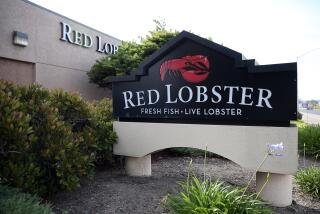Care Enterprises Bondholders Improve Their Offer in Bid for Control
- Share via
Bondholders of bankrupt Care Enterprises Inc. have sweetened the terms of their proposal to restructure the Tustin nursing home chain in an effort to win the backing of the company’s principal lenders.
Under the revised terms, the only major difference between the reorganization plan submitted by the bondholders and a rival plan proposed by the company is the issue of who should control the firm when it emerges from bankruptcy proceedings.
The bondholders, represented by an unsecured-creditors committee, are seeking to oust Care’s current management team and assume control of the company, which operates 94 nursing homes.
The company’s reorganization plan calls for leaving control in the hands of twin brothers Lee Roy and Dee Roy Bangerter, who serve as Care’s chairman and chief operating officer, respectively.
The revised plan submitted by the bondholders calls for Wells Fargo Bank and Citibank, the company’s principal lenders, to receive an immediate payment of $10 million of the $40 million they are owed. The banks would receive the remaining money over 3 1/2 years.
Under the bondholders’ original reorganization plan, the banks would have received no immediate payment, and they would have received their funds over 6 years.
Faster Repayment
The revised plan is much closer to the reorganization proposal submitted by Care’s management, which also calls for a $10-million, up-front payment to the banks. But the company plan would repay the remaining funds over 3 years, slightly faster than the bondholders’.
Care attorney Irving Sulmeyer said the revised plan submitted by the bondholders is still less attractive than the company’s proposal because of the longer pay-back period.
But Richard Havel, attorney for the creditors committee, disagreed. “I believe we are going to have the banks’ support,” Havel said. “With our change, future ownership becomes the biggest difference.”
Both the company and the creditors’ committee have made numerous revisions since they filed original plans months ago.
Care filed for protection from creditors under Chapter 11 of the U.S. Bankruptcy Code in March, 1987, after a trustee for a bondholder group demanded immediate payment of $51.7 million in outstanding bond debt.
A third reorganization plan has been filed by Paradigm Corp., an Ohio company controlled by Ralph Hazelbaker, who wants to buy 22 nursing homes owned by Care subsidiaries. Paradigm’s plan does not address creditor repayments or Care’s operations.
Sulmeyer said the company is involved in “serious negotiations” to sell several nursing homes, but it does not plan to negotiate with Hazelbaker, who has been embroiled in litigation with Care.
Officials with the two banks have declined to comment on the bankruptcy proceedings.
$180-Million Debt
Of a total of $180 million in outstanding Care debt, the two banks have claims of $40 million, and the bondholders have claims of about $68 million. In addition, the company owes about $60 million to holders of mortgages on Care facilities.
Sulmeyer said that Care’s management may file minor changes in its plan later this week in response to the creditors’ revision.
As early as next month, the U.S. Bankruptcy Court in Los Angeles may approve a disclosure statement that includes the company’s business plan and earnings projections. Reorganization proceedings could begin by late summer, Havel said.
Care’s losses have continued to mount since it filed its reorganization case. In its business plan, the company reported unaudited financial results showing a loss of $10.6 million for the first 9 months of 1988.
Care has not released audited results since 1987, when it posted a loss of $13 million for the first 9 months of that year. The company said it has received extensions from the Securities and Exchange Commission to file results, and it plans next month to report audited results for 1988 and for the first quarter of 1989.
More to Read
Inside the business of entertainment
The Wide Shot brings you news, analysis and insights on everything from streaming wars to production — and what it all means for the future.
You may occasionally receive promotional content from the Los Angeles Times.










